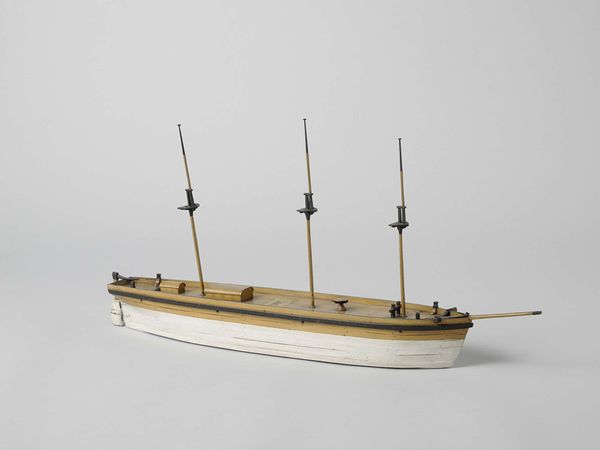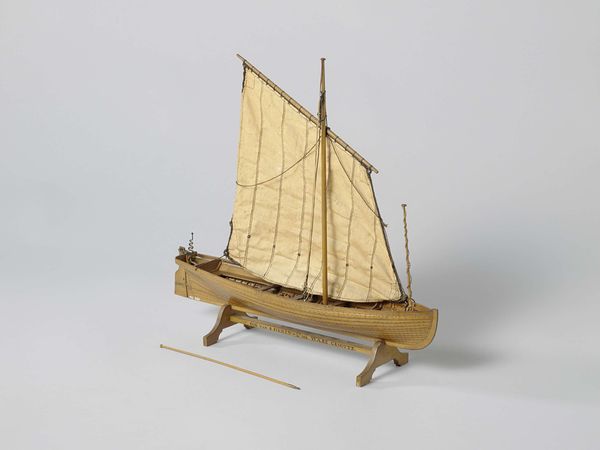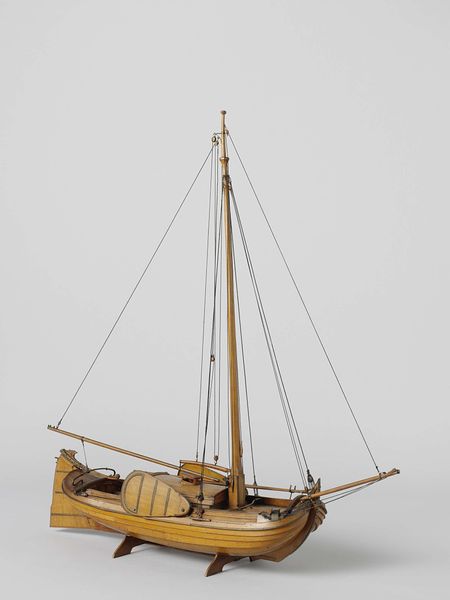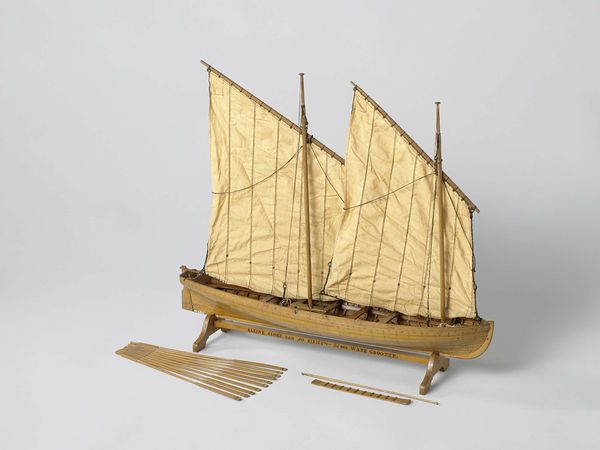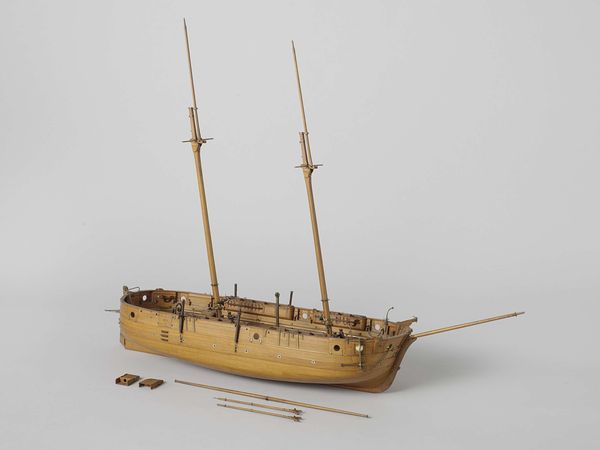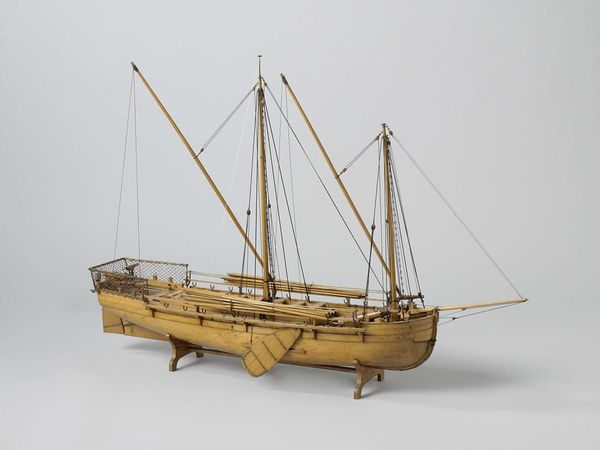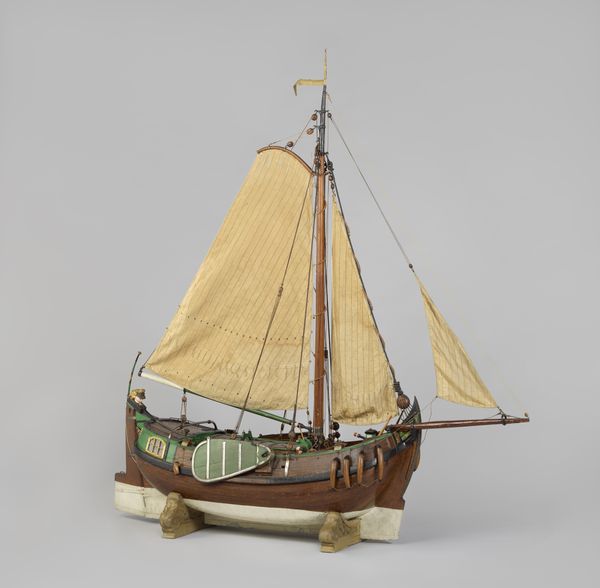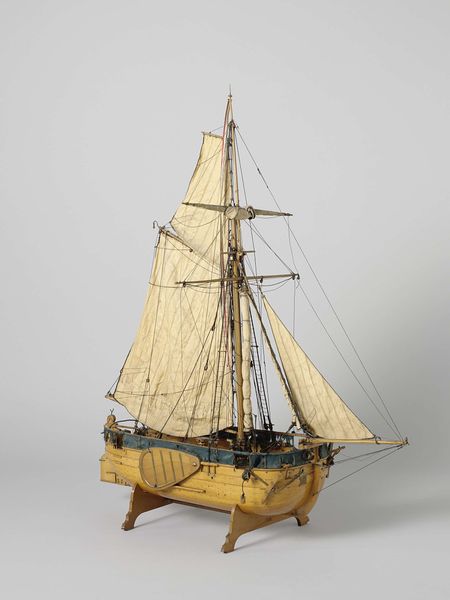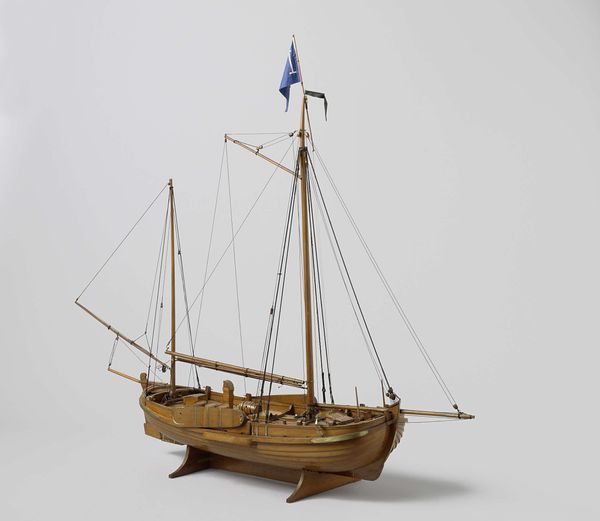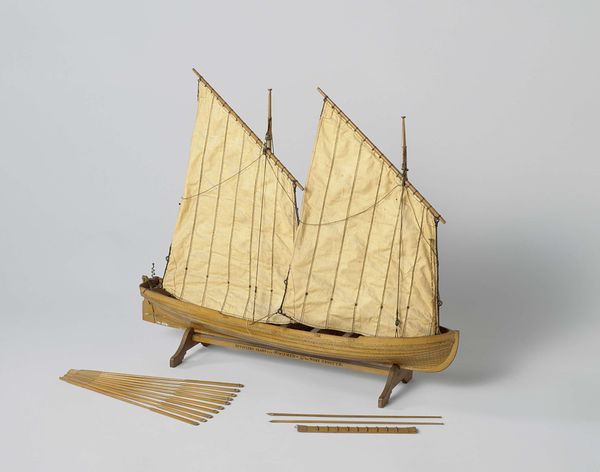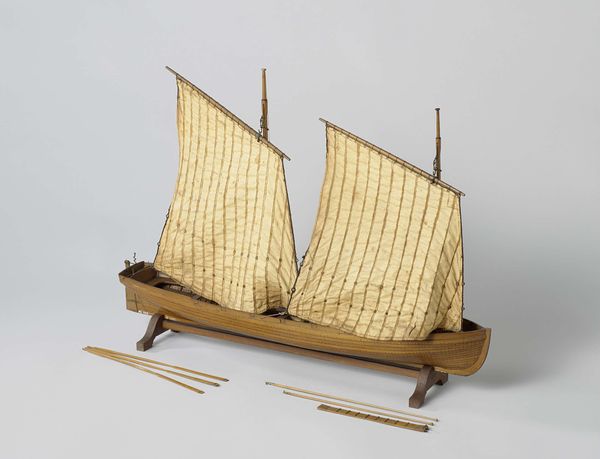
sculpture, wood
#
geometric
#
sculpture
#
wood
Dimensions: model height 76 cm, model length 80 cm, model width 15 cm, packaging capsule height 60 cm, packaging capsule width 84 cm, packaging capsule depth 20.5 cm
Copyright: Rijks Museum: Open Domain
Editor: This wooden sculpture, "Model of a Pilot Cutter," was created around 1851 or 1852 by Rijkswerf Vlissingen. Its simple form and pale wood grain give it an almost ghostly presence. What aspects of this model stand out to you? Curator: Immediately, the stark geometric composition arrests the eye. The vessel's hull, a study in curvature, is sharply juxtaposed with the rigid verticality of the mast. The materiality is equally compelling. Notice how the artist exploits the natural texture of the wood itself? Editor: I do! It's as if the wood grain emphasizes the linear aspects and the flowing lines of the boat. Is that contrast significant? Curator: Absolutely. It creates a visual tension, a dialogue between the inherent nature of the medium and the imposed form. Think about the philosophical implications: is the artist highlighting a struggle, a negotiation between material and design? Or is it celebrating a harmony? Editor: I see how that visual contrast encourages a deeper reading beyond just a pretty boat model. Are there other examples where this tension might appear? Curator: Think of the modernist sculptors, like Brancusi, who emphasized form over representational accuracy. Here, the lack of sails focuses the eye on pure shape and material, elevating it beyond a mere miniature. Editor: That connection to modernist sculpture makes me appreciate it much more. Thanks! I hadn’t considered those angles. Curator: It highlights how intrinsic form communicates more powerfully when external ornamentation is stripped away. A valuable insight, indeed.
Comments
No comments
Be the first to comment and join the conversation on the ultimate creative platform.
